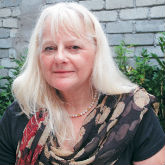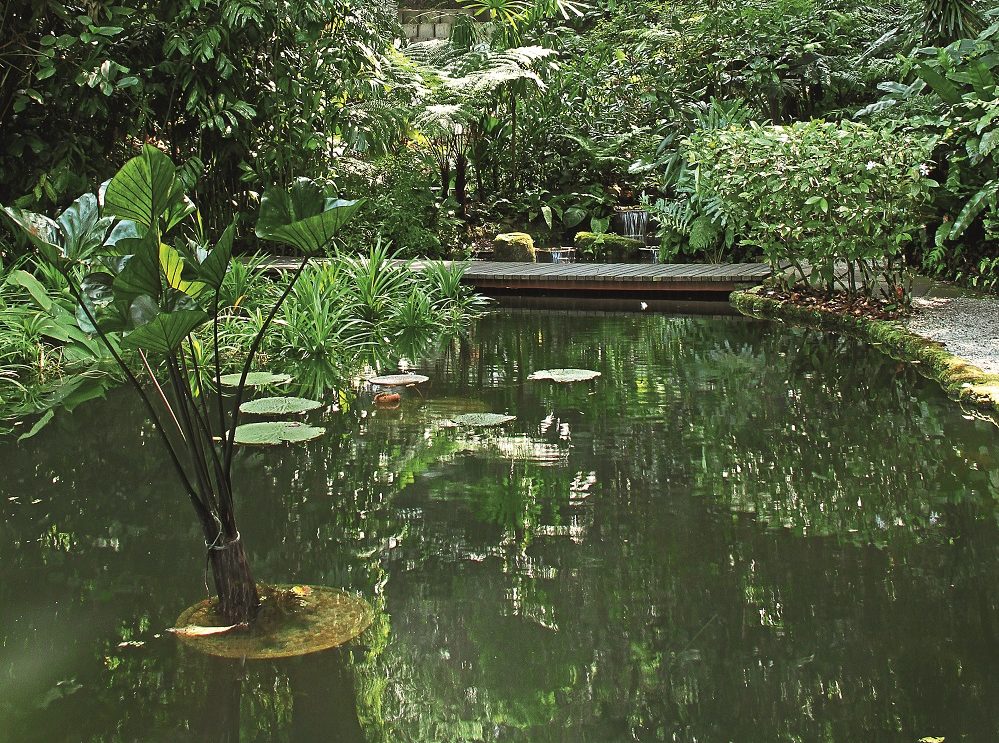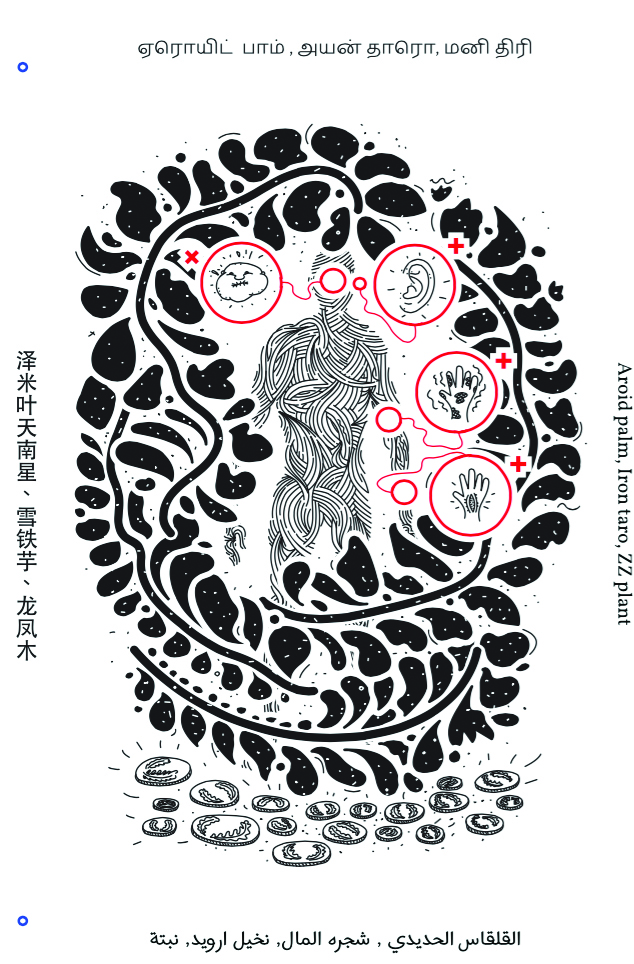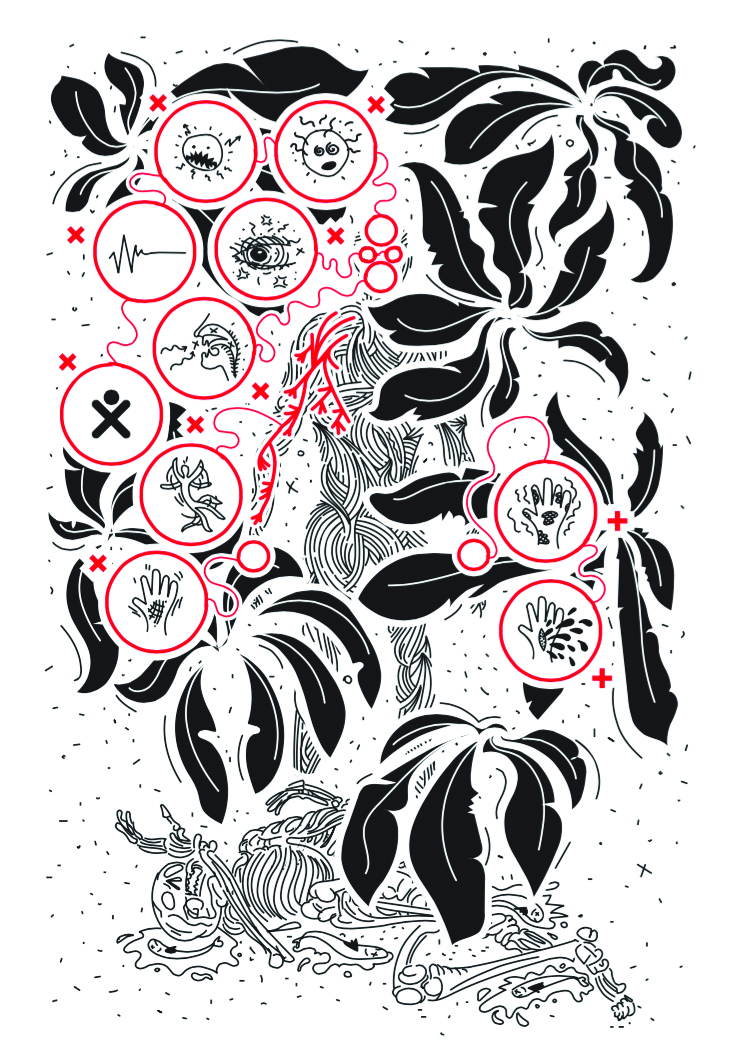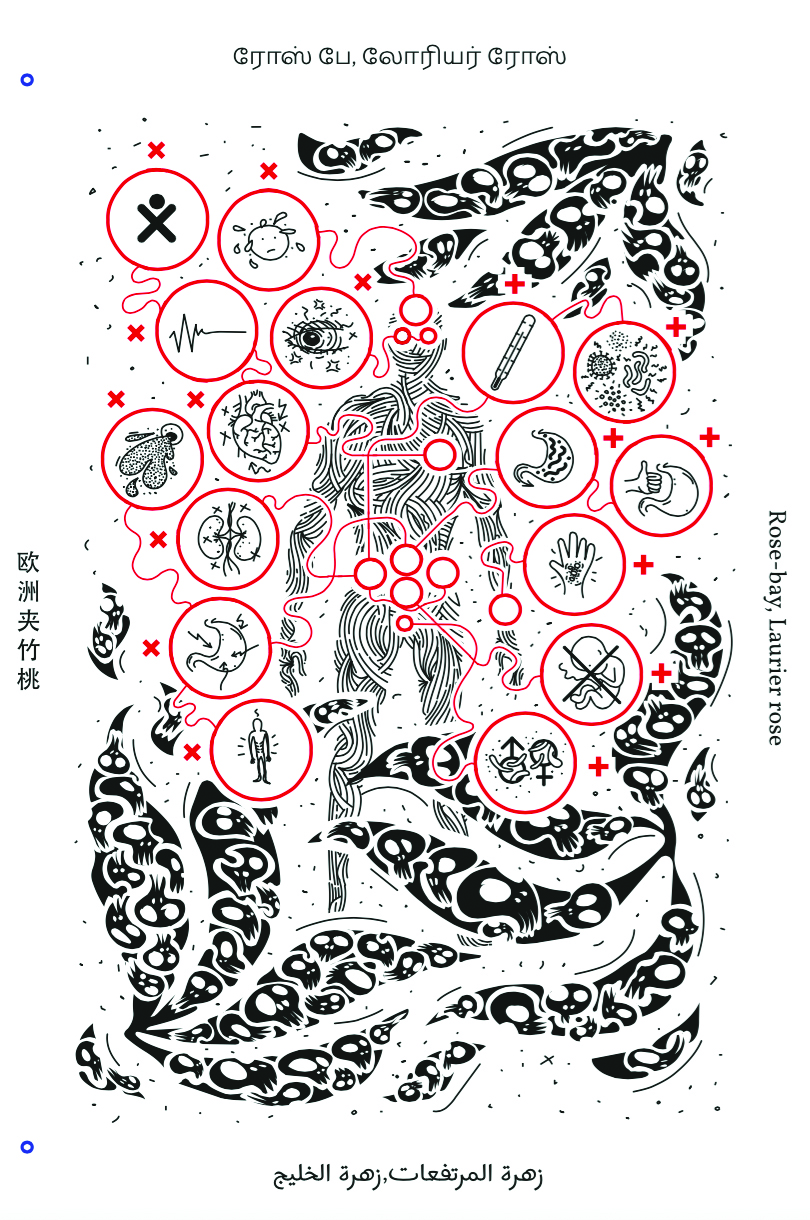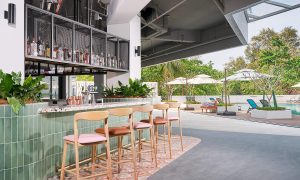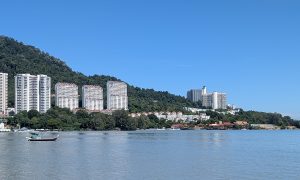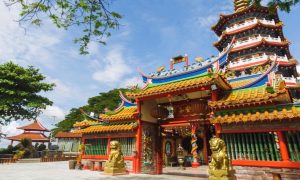An unusual theme garden was unveiled at the Tropical Spice Garden in November and Frances Wilks met its progenitors – Tauras S. who designed it and Kenny Khoo who planted it.
A garden of toxic plants may seem like a contradiction in terms but, as the designer of Penang’s new poison garden, Tauras S., points out, “Human beings and poison plants have in fact co-existed for millennia. In fact many of them are, in different amounts, also medicines. It will probably be a surprise to you that most of us live very close to deadly plants. You may even water one every day.”
If you do water one on a daily basis it’s quite likely to be one of the most poisonous plants in the collection, which is nerium, perhaps better known as oleander. As Kenny Khoo, the Head Gardener at the Tropical Spice Garden, says, “Sometimes it’s the roots, or the stem, or the seeds, or the bulbs of a plant which are poisonous but every single part of the oleander shrub – including its beautiful flowers – is potentially deadly.”
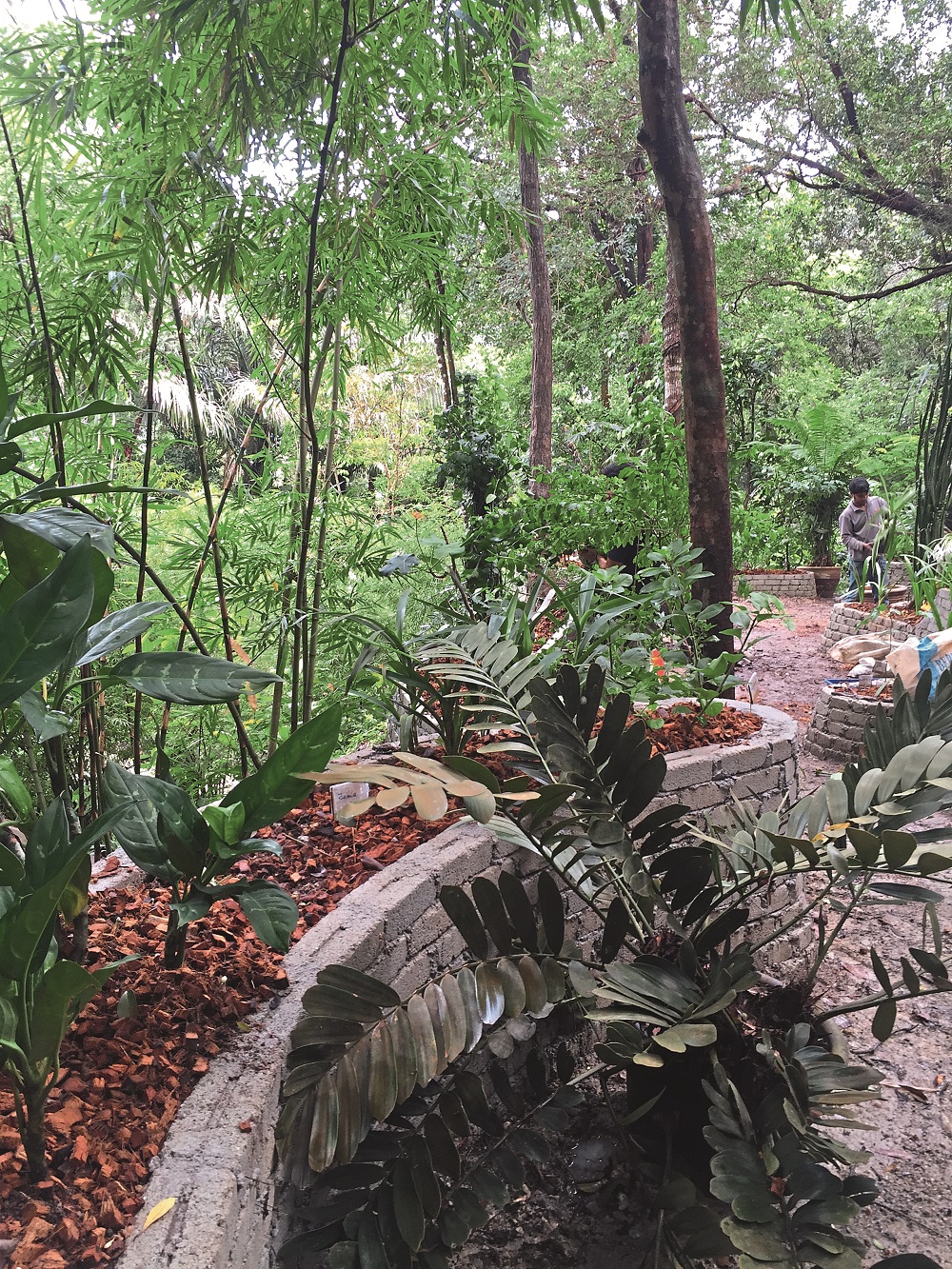
The Tropical Spice Garden was set up to showcase the history and culture of spices. You can learn about how spices are grown and what they are used for as you walk about its cool, shaded paths. It isn’t just a botanical garden; it’s also a place of relaxation where you can also sink into a hammock or a giant swing.
They have examples of most of the tropical spices except star anise, which is proving hard to cultivate, as Kenny tells me. “The Tropical Spice Garden is planted on an old rubber estate and so the soil is quite exhausted. Also, we left many of the bigger older trees in place to provide shade and they suck up the minerals before the smaller plants have a chance. So we have to grow some of them in pots to make sure they get the right nutrients.”
The Garden also runs a Cooking School, where you can learn Asian cuisine using many of the delectable spices that are grown in the garden. So this new venture is a bit of a change of gear. The first poison garden proper was probably in Renaissance Italy where in Padua the Venetians planted beds of medicinal and poisonous plants to help herbalists of the day distinguish one from another and so prevent them from poisoning their clients. Later the Medici family took over the garden and its knowledge enabling the reverse – actually poisoning their enemies.
In the twenty-first century the Duchess of Northumberland revived the idea of a garden devoted to noxious plants at her home, Alnwick Castle. Some of the plants are so toxic that the gardeners have to be dressed in protective clothing. She even grows narcotics and psychedelics such as cannabis and opium (from which heroin is derived). And there’s the rub because for most of human history these plants were regarded as healing agents and not dangerous drugs.
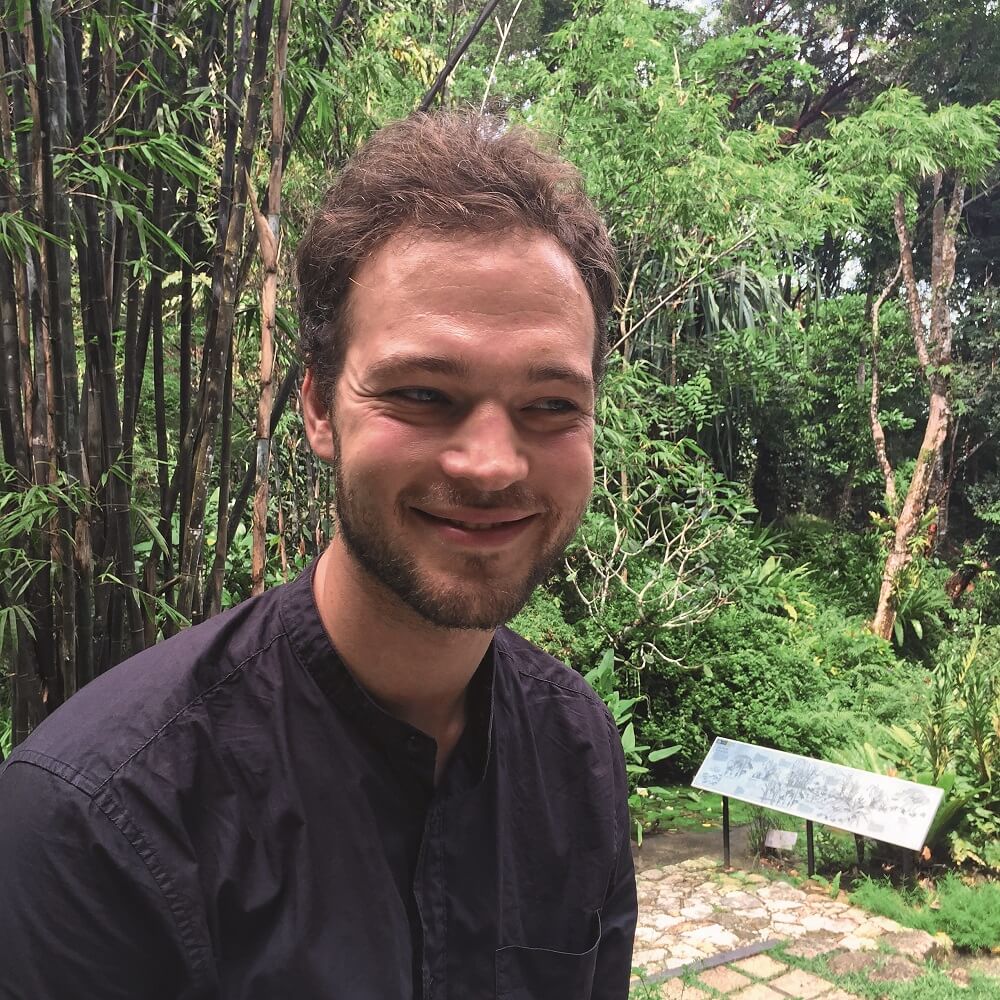
Although the Tropical Spice Garden’s poisonous plants aren’t as dangerous to the skin as those at Alnwick, they nevertheless pack a deadly punch. As Tauras says, “The main idea behind the Poison Garden is the irony of evolution: the more poisonous those plants are, the more they became valuable to us. We have been using them for ages to heal as well as to harm each other. Poisonous plants are definitely an inseparable part of human history.” He has worked closely with Kenny to create a small but exquisite collection of thirty-eight plants. His aim was to tell the complex stories of their interaction with humanity in a way that resembles an art gallery quite as much as it does a botanical garden. The day I visited, the finishing touches were being put into place on a newly constructed terrace just above the Bamboo Garden.
Each plant is accompanied by a small open metal book with information for the visitor. On one page there is a drawing of the plant with its name in five languages: English, Bahasa Malaysia, Tamil, Arabic, and Chinese. On the opposing page is an illustration of the way the plant interacts with the human race – on the left the ways that it can poison us and on the right the ways that it can heal us. And not only heal us – some of the poison plants are actually food. Manioc, for instance, is illustrated with a skeleton lying under the plant – and with good reason – it contains cyanide. Often used as a fish poison, it can easily kill a human being. But properly prepared the poison is neutralised and it becomes an edible starch eaten daily by millions of people.
It’s even an ingredient for the popular Penang dessert Bobo Chacha. The science, the medicine, the folk traditions and the myths (and the occasional police report) are all presented to the audience in the universal language of image and symbol. The symbols do take a bit of getting used to. A black cross with a dot above it means death, for instance. A crab means that the plant is believed to be effective as a form of cancer treatment. The symbol for a man and a woman placed together denotes that the plant may be used to treat venereal disease. Actually it’s rather fun to start decoding and you have some written information so the whole thing becomes a bit like a puzzle.
Even more fascinating are the “folk wisdom” stories that the plants tell. Abrus precatoris, whose seeds can kill you in three or four days, is said to be able to predict extreme weather conditions and even earthquakes, though would probably need to be a shaman to read the future in the drooping of its leaves.
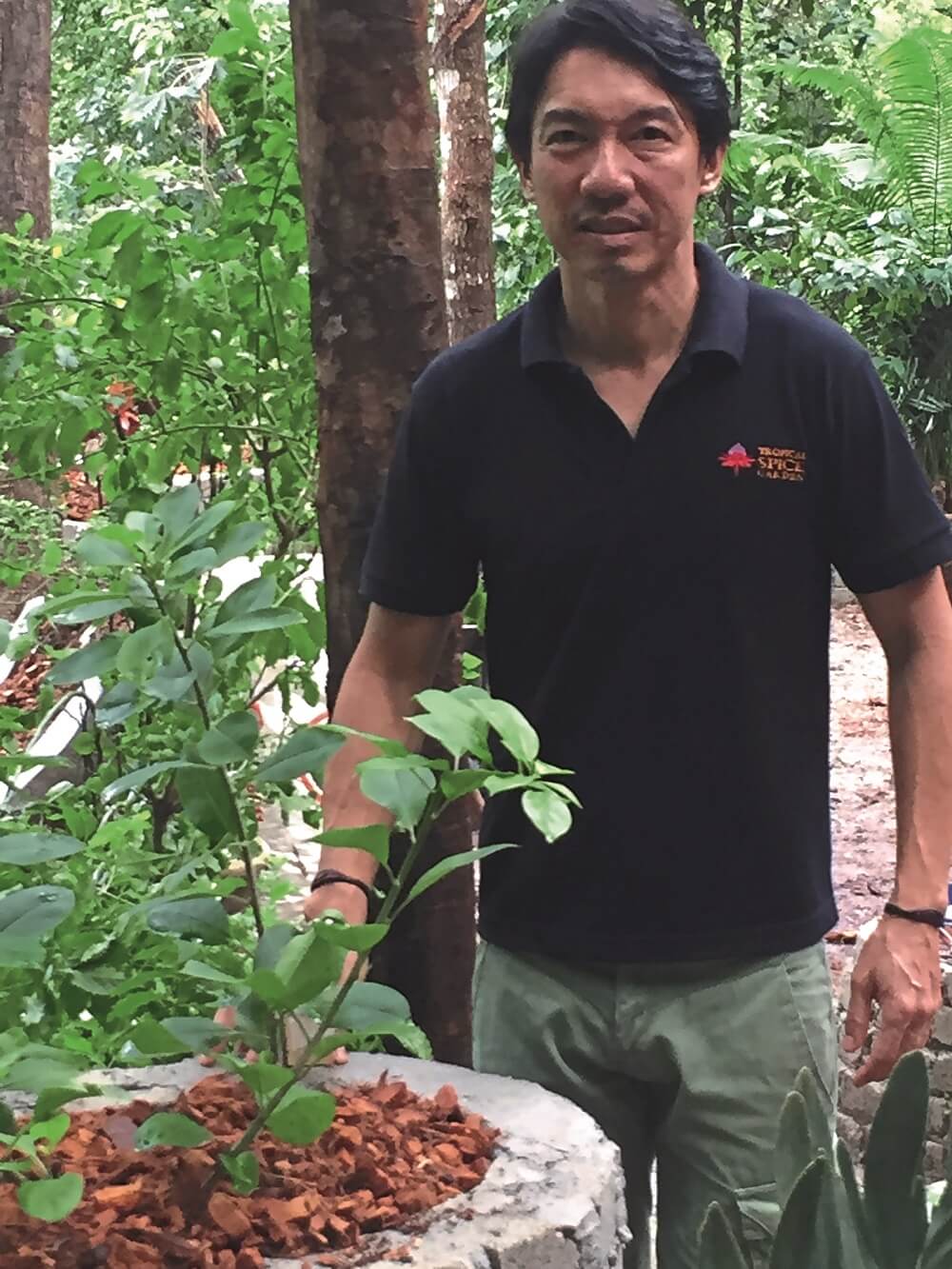
Brugmansia, or Angel’s Trumpet, is also deadly but in smaller quantities has been used by Columbian drug cartels to create zombie states in their enemies. Victorian ladies used to add tiny amounts of its pollen to their tea to induce LSD-like states.
It’s also reputed to be an amazing aphrodisiac. And one should never be without zamiocalcas – often tied up with red ribbons and given at Chinese New Year.Why? Because it’s a money tree and will bring you wealth.
Tauras S. has obviously enjoyed this project. He’s a product designer and illustrator from Lithuania who’s made Penang his home. It marks something of a new vision for the garden as well.
As well as educating visitors to the Tropical Spice Garden about plants, one of the new goals is to encourage designers of all kinds – fashion, animation, graphic – to see the garden as a resource and an inspiration. There are certain to be any number of surprises ahead – after all, who knows what may happen when the sleeping tigers awake?
This article was originally published in The Expat magazine (December 2016), which is available online or in print via a free subscription.

